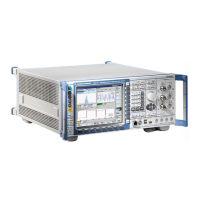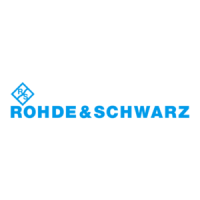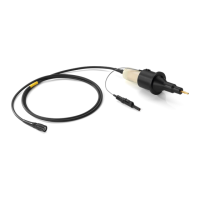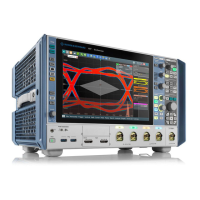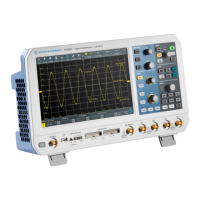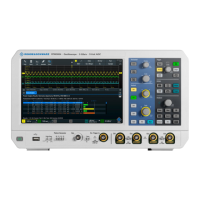CMU Structure and Syntax of Device Messages
1100.4903.12 5.7 E-8
Structure and Syntax of Device Messages
SCPI Introduction
Not all of the commands supported by the instrument are taken from the SCPI standard (Standard
Commands for Programmable Instruments), however, their syntax follows SCPI rules. All information
given in this section and all the command examples apply to the CMU.
SCPI (S
tandard Commands for Programmable Instruments) describes a standard command set for
programming instruments, irrespective of the type of instrument or manufacturer. The goal of the SCPI
consortium is to standardize the device-specific commands to a large extent. For this purpose, a model
was developed which defines the same functions inside a device or for different devices. Command
systems were generated which are assigned to these functions. Thus it is possible to address the same
functions with identical commands. The command systems are of a hierarchical structure. Fig. 5-2 illus-
trates this tree structure using a section of command system SOURce, which operates the signal
sources of the devices. The other examples concerning syntax and structure of the commands are
derived from this command system.
SCPI is based on standard IEEE 488.2, i.e. it uses the same syntactic basic elements as well as the
common commands defined in this standard. Part of the syntax of the device responses is defined with
greater restrictions than in standard IEEE 488.2 (see section Responses to Queries).
Command Structure
The commands consist of a so-called header and, in most cases, one or more parameters. Header and
parameter are separated by a "white space" (ASCII code 0 to 9, 11 to 32 decimal, e.g. blank). The
headers may consist of several key words. Queries are formed by directly appending a question mark
to the header.
Common Commands
Common (=device-independent) commands consist of a header preceded by an
asterisk "*" and eventually one or several parameters.
Examples:
*RST
RESET, resets the instrument.
*ESE 253
EVENT STATUS ENABLE, sets the bits of the event status en-
able registers.
*ESR?
EVENT STATUS QUERY, queries the contents of the event
status register.
Device-specific commands
Hierarchy:
Device-specific commands are of hierarchical structure (see Fig. 5-2). The different
levels are represented by combined headers. Headers of the highest level (root
level) have only one key word. This key word denotes a complete command sys-
tem.
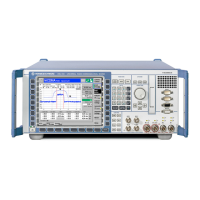
